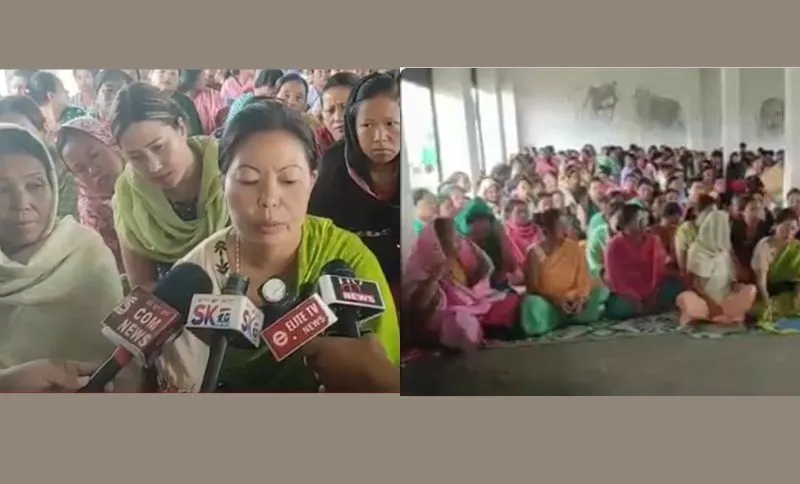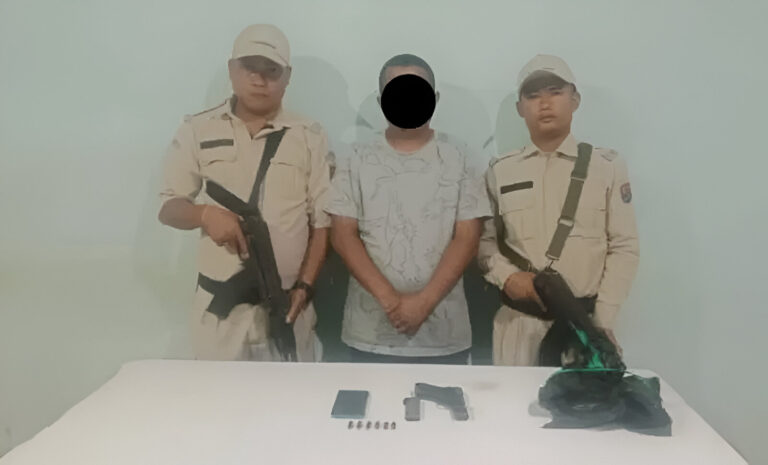Internally Displaced Persons (IDPs) at the Mandav Yumpham relief camp in Imphal West
Summary of the News Article
Internally Displaced Persons (IDPs) at the Mandav Yumpham relief camp in Imphal West staged a sit-in protest on July 1, demanding action after a Meitei family’s land documents disappeared. The family—headed by Oinam Thoithoi, whose home in Kangpokpi’s Charharzar Meitei Leikai was destroyed during the May 2023 ethnic violence—submitted computerized land patta, ration card, voter ID, PAN, and Aadhaar. Yet local police report no record of any house at that village. The family has demanded a proper investigation into the missing documents. Over 59,000 people are still displaced, with more than 4,700 homes destroyed in the violence.
Introduction: A Grievance Born from Displacement
Isn’t it gut-wrenching to lose your home—and then your proof of ownership? That’s exactly what happened in Imphal West on July 1 when a Meitei family, displaced by last year’s ethnic violence, raised serious allegations: their land documents—patta, cards, IDs—have vanished. They took matters into their own hands, staging a sit-in at the Mandav Yumpham relief camp. Today, we’ll unpack this poignant protest, its wider implications, and what it means for thousands of displaced families in Manipur.
1. Who are These Protesters?
The Oinam family—led by Oinam Thoithoi and wife Sanathoi—lost their home in Kangpokpi on July 27, 2023 amid communal violence. They relocated to the Mandav Yumpham relief camp. On July 1, over missing documents, they demanded action. According to reports, Thoithoi submitted patta, ration card, voter ID, PAN, and Aadhaar to police—yet authorities in Kangpokpi have officially stated there’s no evidence of a house at their former village
2. What Sparked the Sit-In?
Imagine waking up tomorrow after months of living in a relief camp to discover that someone burned your original deeds overnight. That’s the emotional betrayal this protest highlights. IDPs felt abandoned not only by violence, but by the system responsible for safeguarding their identities and property rights. They blocked the camp’s gate, demanded investigation, and called for fairness—and respect.
3. How the Authorities Responded
Police from Supremeina Police Station in Kangpokpi investigated—twice—only to find no trace of a house in their official records as of June 17. Thoithoi then appeared at the ADR Court in Lamphel, Imphal West, on June 23, via video conference, reiterating his claims and urging a proper inquiry. Despite legal intervention, IDPs say the answers are too slow, the red tape too thick.
Why Are Land Records Missing?
A few possible scenarios may explain the missing documents:
- Physical destruction: housing and possible record-destroying fires during the violence
- Administrative chaos: displacement hampering record-keeping
- Corruption or negligence: missing files, lost paperwork, or bureaucratic shifts
- Intentional erasure: in worst cases, targeted deletion of a family’s official history
Any scenario is disturbing—but the emotional toll is heavy, especially for families rebuilding their lives.
6. Why This Protest Matters
a) It’s About Justice
Reclaiming land documents is reclaiming identity and security.
b) Administrative Precedence
This is precedent to how the state treats documentation, even in crisis.
c) Human Rights at Stake
Land without records means no claim, no compensation—no future.
d) Political Wake-Up Call
Authorities need to act—quickly—to avoid a bigger credibility crisis.
The Emotional Undercurrent
It’s not just about land—it’s about dignity. Sanathoi, Thoithoi’s wife, expressed frustration—having submitted everything yet still being denied recognition. That raw frustration rippled through camp residents, who see in this case their own story of displacement and erasure.
What’s Next on Their Agenda?
- Demanding a formal inquiry into land record disappearance
- Restoration of documents, digital copies, affidavits—anything that legitimizes claims
- Community-wide action, building solidarity among camp residents
- Engagement with authorities—ADR offices, district administration—and possibly state-level escalation
What’s at Stake? A Stakes Table
| Stakeholder | Risk | Opportunity |
|---|---|---|
| Displaced families | Continued invisibility and legal limbo | Rebuild identity, justice, dignity |
| State government | Litigation backlash, trust deficit | Showcase effective crisis management |
| Civil society | Credibility gap if unable to support | Rally behind process, legal empowerment |
| General public | Erosion of faith in systems | Be mindful of governance, rights discourse |
FAQs
- Why did the family protest at Mandav Yumpham camp?
They allege key land documents disappeared after displacement, and authorities refuse to acknowledge their property. - What documents are missing?
Computerized land patta, ration card, voter ID, PAN, Aadhaar, and others used to verify land ownership. - What have authorities said about this?
Kangpokpi police, after due inquiries—reported no record of any house in Charharzar Meitei Leikai as of June 17. - How many people remain displaced?
Over 59,000 across camps following violence since May 3, 2023. - What’s the broader significance?
Missing documents threaten IDPs’ ability to claim land, compensation, loans, or rebuild lives—undermining long-term recovery.




